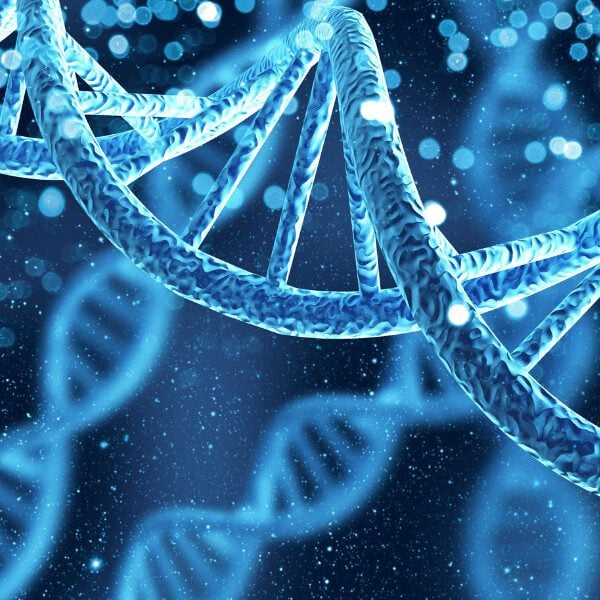For decades, vast stretches of the human genome were written off as “junk DNA”, genetic material that seemed to serve no clear purpose. But emerging research in ALS is turning that assumption on its head. Two groundbreaking projects supported by Target ALS are shining a light on transposable elements (ancient sequences like LINE1 and HERV-K) and their surprising role in neurodegenerative disease. These once-dismissed genetic elements are now being reimagined as both drivers of disease and targets for precision therapies and diagnostics.
| ALS 101: Transposable elements, sometimes called “jumping genes,” are pieces of DNA that can move to different places in our genetic code. In healthy cells, they’re usually kept quiet, but in ALS, certain types like LINE1 and HERV-K can switch on when they shouldn’t. This can cause problems in nerve cells, like stress, damage, or inflammation, and researchers are exploring how this might drive the disease and open the door to new treatments. LINE1 (Long Interspersed Nuclear Element-1): A type of transposable element that can copy and insert itself into new locations in the genome. Increased LINE1 activity is linked to neuron stress and damage in ALS. HERV-K (Human Endogenous Retrovirus-K): A remnant of ancient viral infections embedded in human DNA. Though usually inactive, HERV-K can become reactivated in ALS and may play a role in disease progression. Antisense Oligonucleotides (ASOs): Short strands of synthetic RNA or DNA designed to bind specific RNA targets in cells. They can silence disease-related genes or prevent harmful proteins from being made. m6A Methylation: A chemical modification on RNA that helps regulate its stability and function. Reduced m6A in ALS may allow harmful RNAs like LINE1 to accumulate. Chromatin Relaxation: A loosening of the tightly packed DNA-protein structure in cells, which can lead to abnormal gene activation—including transposable elements. Neuron-Derived Extracellular Vesicles (NDEs): Tiny particles released from neurons into bodily fluids like blood. They carry molecular “snapshots” of what’s happening inside neurons and are being explored as non-invasive biomarkers in ALS. Engrailed-1 (EN1): A type of protein called a homeoprotein, involved in regulating gene expression and neuron development. In ALS models, EN1 helps suppress LINE1 activity and may support neuron survival. TDP-43: A protein essential for RNA processing in cells. In ALS, it becomes mislocalized and clumps in the cytoplasm, disrupting key cellular functions and contributing to neurodegeneration. |
Dr. Yini Li: Epigenetic Control of LINE1 in C9orf72 ALS
Dr. Yini Li, a Target ALS Springboard Fellow and new lab leader at Purdue University, is investigating the elevated activity of LINE1 RNA in ALS linked to C9orf72, the most common genetic form of the disease. LINE1 is a type of transposable element; a sequence that can copy and insert itself into different parts of the genome. In healthy cells, its activity is kept tightly regulated. But in ALS, Dr. Li’s team found that epigenetic changes, including reduced m6A methylation and chromatin relaxation, cause LINE1 RNA to accumulate, potentially contributing to neuron vulnerability.
Her lab has shown that antisense oligonucleotide (ASO) therapies targeting LINE1 reduce its buildup and improve the survival of patient-derived neurons exposed to stress. These results point to a novel therapeutic strategy, silencing disease-driving RNA elements to protect cells and slow degeneration.
At the same time, other approaches to therapeutically targeting retrotransposons and retrovirus are being developed by Twilight and BrainEver Pharma. The Target-ALS funded consortium is developing vaccines and homebox therapies to treat herv-k + ALS and investigating HervK and Line1 as possible biomarkers.
Transposable Elements in Extracellular Vesicles: A Biomarker-Driven Consortium
A collaborative consortium led by NeuroDex that includes scientists from Twilight Neuro, BrainEver Pharma, and NINDS is analyzing NDEs to detect HERV-K and LINE1 RNA, both implicated in ALS pathology. Early findings show that these elements are not only elevated in a subset of ALS patients, but also strongly correlate with TDP-43 protein mislocalization, the central hallmark of ALS. This makes them promising biomarkers; potential tools to identify who is most at risk, and who might benefit from therapies that suppress transposable element activity.
One of those therapies could be Engrailed-1 (EN1), a homeoprotein shown in ALS models to both repress LINE1 activity and help restore neuronal health. EN1 can be naturally secreted and taken up by neighboring neurons, where it may alter gene expression, boost mitochondrial protein production, and even reverse key markers of degeneration. The consortium is now studying EN1 target engagement using NDE-based biomarkers like LINE1 and protein signatures, with the hope of measuring both disease progression and therapeutic impact through a simple blood test.
The Bigger Picture: Rethinking Disease Timing and Compensatory Mechanisms
Perhaps most provocatively, these studies suggest that biological drivers of ALS may be present well before symptoms appear, but that the body’s own compensatory systems, like EN1 and other homeoproteins, delay clinical onset. Understanding these protective responses may offer new opportunities to intervene earlier, with the goal of preserving neuron function before irreversible damage sets in.
💡 Key Takeaway:
Transposable elements are no longer just relics of evolution. They’re emerging as active contributors to ALS and potential tools for early diagnosis and targeted therapy. With biomarker-informed strategies and novel therapeutic approaches like EN1 and LINE1-targeting ASOs, the field continues to push boundaries, exploring new types of gene-targeting therapies for ALS.




